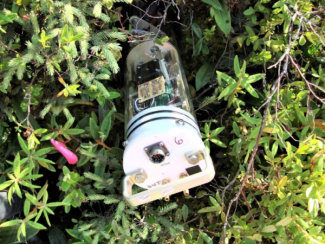SPRUCE High-Resolution Minirhizotrons in an Experimentally-Warmed Peatland Provide an Unprecedented Glimpse at Fine Roots and their Fungal Partners: Supporting Data
Description
Images were collected using first of their kind, non-destructive, high-resolution automated minirhizotrons (RhizoSystems, LLC) to assess the response of plant fine-root and fungal mycelium dynamics to elevated temperatures after 4-6 years of whole-ecosystem warming and exposure to elevated carbon dioxide concentrations (e[CO2]) in a peat bog where the SPRUCE experiment is located. We focused on two SPRUCE experimental plots: Plot 10 has elevated temperature (+9°C) and plot 19 is a control (+0°C). Both have elevated CO2 (e[CO2]). Changes in root and fungal abundance with warming were estimated from a timeseries of landscape-level mosaiced images for each plot by measuring the proportional abundance of five belowground classes: fine roots of vascular plants, ectomycorrhizas, fungal hyphae, fungal rhizomorphs, and fungal sporocarps. To examine root and fungal phenology responses to warming, the length per individual root or fungal structure areal coverage were measured per image area of a set of timeseries patch-level mosaiced images for each plot. These data are provided in support of the publication: High-Resolution Minirhizotrons in an Experimentally-Warmed Peatland Provide an Unprecedented Glimpse at Fine Roots and their Fungal Partners (Defrenne et al., In review)
Citation
Childs J, Defrenne CE, Brice DJ, Woodward J, Holbrook KN, Nettles WR, Taggart M, Iversen CM. 2020. SPRUCE High-Resolution Minirhizotrons in an Experimentally-Warmed Peatland Provide an Unprecedented Glimpse at Fine Roots and their Fungal Partners: Supporting Data. Oak Ridge National Laboratory, TES SFA, U.S. Department of Energy, Oak Ridge, Tennessee, U.S.A. https://doi.org/10.25581/spruce.081/1637336
Download
Posted
Wednesday, July 22, 2020
SPRUCE ID: spruce.081
Public






